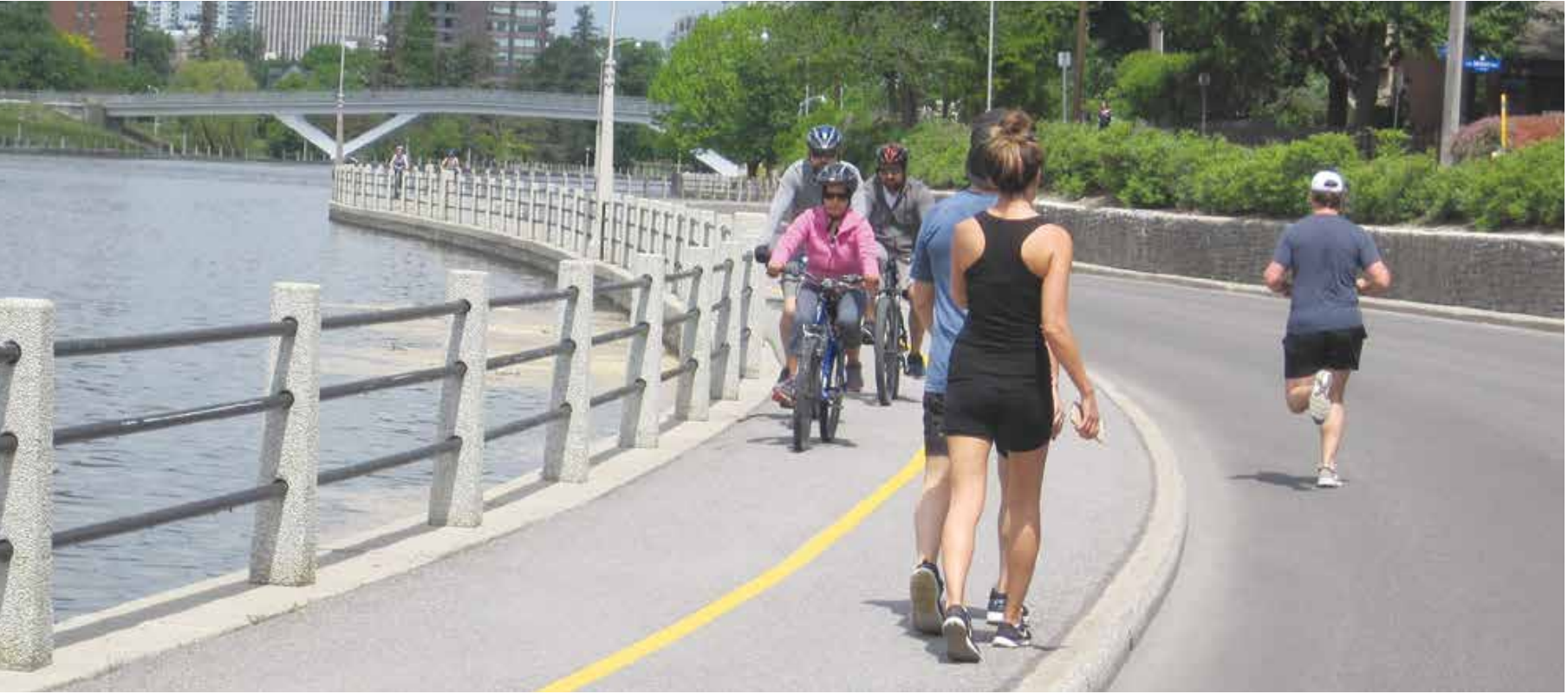
The Old Ottawa East Community Association believes that rather than closing Colonel By Drive to motorists, active transportation should be encouraged by widening the pathway and adding bike lanes to the roadway. Photo by John Dance
John Dance
The Canal parkway closure pilot continues. Last year, much of Queen Elizabeth Driveway (QED) was closed for cyclists and pedestrians for the first part of the summer, then it was reopened and Colonel By Drive (CBD) took over. This year, just QED will be closed.
Reaction to QED closing this summer is mixed but there are enthusiastic supporters of it, especially the Centretown Community Association which has lobbied for the closure for several years. “Queen Elizabeth Driveway (QED) begs to be a permanent car-free promenade,” Shawn Barber, former president of the Centretown Community Association, wrote to Tobi Nussbaum, chief executive officer of the National Capital Commission which operates the parkways.
“The QED was extremely well used by pedestrians, joggers, dog walkers, cyclists and boarders when closed during COVID,” wrote Barber. “Its popularity and value as a vehicle-free amenity are now clear. Close the QED to vehicles, possibly as far as Fifth Avenue, and let it become a grand promenade. It would be a promenade epitomizing the character and culture of Ottawa.”
The NCC seems to have taken this advice to heart. “Our preliminary plan included the use of the full length of QED, however, as a result of the feedback received from the City of Ottawa and Ottawa Sports and Entertainment Group, we adjusted the program, limiting it only from Somerset to Fifth Avenue.” Sofia Benjelloun, NCC spokesperson told The Mainstreeter.
“Even though I live on the Colonel By side of the Canal, I go over there [to QED] almost every day to walk or bike,” says Susan Redding, OOE resident and member of Parkways for People, an advocacy group for transformative change to the national capital parkways. “I love the vibe. I love seeing the huge variety of users out on the road, such as the little kids taking advantage of the extra road space to practice riding their two-wheelers. I also notice way more people using the green space to relax and enjoy views of the water. I feel fortunate to live near it.”
The City of Ottawa doesn’t “love the vibe.” When asked by The Mainstreeter about the closure, Chris Brinkmann, manager of traffic operations, commented: “The current QED closure has resulted in the diversion of about 10,000 vehicles per day and the City is seeing an infiltration of detoured traffic. These daily volumes have shifted from the QED to these residential streets, significantly affecting the neighbouring residential transportation network. This congestion could further cause dangerous delays to emergency responses, both at Lansdowne and within the surrounding community.”
The Glebe Community Association discussed the closure of the QED at a board meeting earlier this year. “We have heard from people who love the increased active recreation space and we have also heard from people concerned about increased traffic and noise on residential streets” said June Creelman, vice-president of the GCA.
“While we are generally supportive of some QED closures, we decided it was premature to take a stance without better data,” Creelman said. “We have written to the NCC and asked them to study traffic impacts and to provide us with more precise data on traffic counts on affected streets.”
One issue with the closure of QED is that CBD is no longer reserved for active users on Sundays mornings and some cyclists miss having the full length of the parkway. On the other hand, QED will have no motorists 24/7 until September and then on Fall weekends so that there is lots more time for car-free cycling and walking than just Sunday mornings.
A recent OOE Grapevine Facebook discussion of the QED closure and the value of it being closed rather than CBD raised many perspectives ranging from both Canal parkways should be car-free permanently to neither should be closed to cars at any time other than Sunday morning.
An oft-expressed Grapevine sentiment was that the closure of CBD to motorists would mean more traffic on Main Street and motorists would have to drive farther to get to their destinations, neither proposition being desirable to these respondents.
“The NCC continues to work with the City on gathering additional traffic data to better understand the impacts that City and NCC seasonal activities may have on neighbourhood streets,” says Benjelloun. “As part of our ongoing commitment to working with the community, we are meeting with different community groups and will be launching a survey at the end of the summer season to help shape the future of the QED programming.” So we’ll all get a chance to tell the NCC what we think of car-free Canal parkways.






